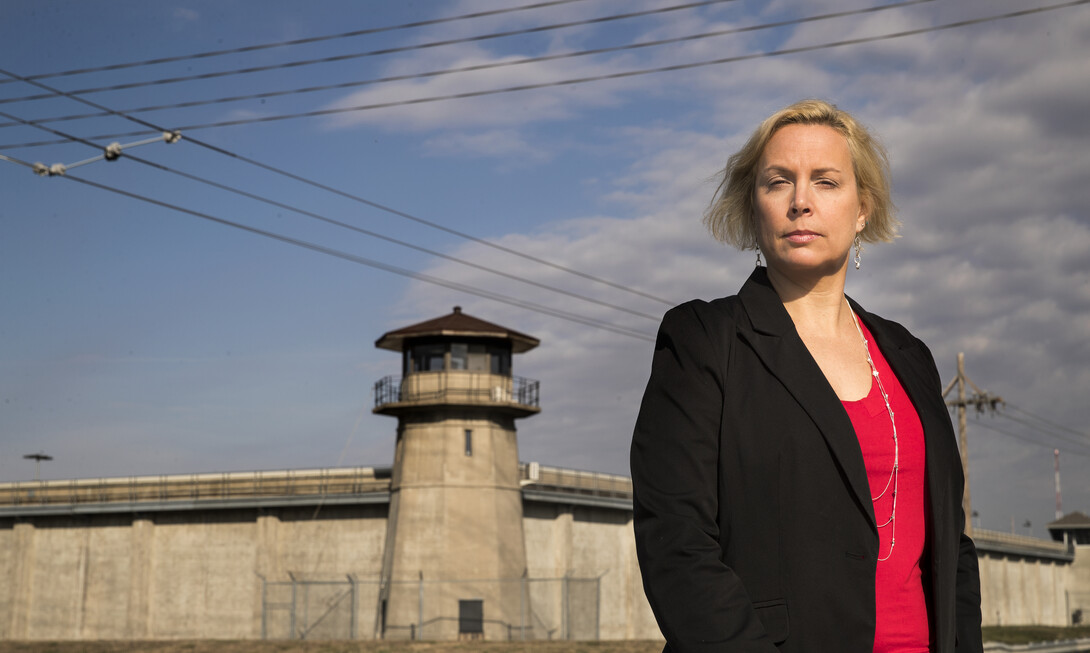
Crime has always been a stalwart topic for legacy news. “If it bleeds, it leads” was the adage assigned by local and national news to one-up competitors. With the rise of social media, reporting on crime is still a dependable way to get clicks and generate views to news websites.
But when a major collective crisis, such as a global pandemic, becomes the salient topic, do news organizations dispense of the time-worn crime narrative?
New research from Husker sociologist Lisa Kort-Butler suggests that in the timeline of the COVID-19 pandemic, from the initial shutdowns, several waves of heightened disease and death and a waning sense of emergency, legacy news organizations continued to elevate crime news through Twitter, but often partnered the pandemic and crime in disjointed ways, and incorporated similar language with both. These crime and pandemic snapshots — in 280 characters or less — likely magnified a sense of instability and insecurity of Americans.
“They were very similar in the narratives, and the types of imagery — the shadowy perpetrators, the isolated woman, or various policing images — that they used,” Kort-Butler, professor of sociology, said. “By and large, the images that were packaged with it fed into that sort of unease, insecurity and fear.”
Kort-Butler looked at Twitter specifically, and tracked tweets related to crime and the pandemic from the accounts of three major network providers (@ABC, @CBSNews and @NBCNews), two major cable news providers (@CNN and @FoxNews), one televised new program (@PBSNewsHour), and the major news provider, the Associated Press (@AP). Of the 156 tweets that were gathered using advanced searches, and dated between March 1, 2020, and Dec. 31, 2021, Kort-Butler found patterns of topics and narratives among all of the news organizations.
“As a person who has looked at crime in the media for a long time, in the beginning stages of this pandemic, it’s almost like, at least with the tweets, the news media wasn’t sure where they were going to land in talking about crime,” Kort-Butler said. “How do we talk about crime in the context of these other terrible things that are happening?”
In the early days and weeks of the pandemic, Kort-Butler found that the narrative of the “shadow pandemic” — or the potential increase of domestic violence because of the shutdowns — was a particular focus, with regular imagery of women in shadow, seemingly secluded in a room, or curled up with the faces hidden. The onslaught of tweets regarding domestic violence dissipated just as quickly, Kort-Butler found.
Another early, but more enduring, theme centered on the rise of hate crimes against Asian people. In 2020, there was a cluster of incidences and a warning from the FBI that garnered national media interest. Again, this theme waned, but was revived following the passage of a new federal hate crimes bill, which became law in May 2020, and after a March 2021 shooting in Atlanta that targeted Asian-American women. Kort-Butler noted that tweets around this time touched on hate crimes against Asian Americans, but often depicted politicians’ responses, rather than the victims.
Eventually, news organizations began marrying the pandemic and crime, highlighting pandemic fraud, the alleged new opportunities that pandemic measures offered for criminals, such as masks being a good cover for thieves, or the release of some from jails and prisons to stem disease transmission. They also incorporated a pandemic metaphor to describe crime, from using the term “public health crisis” to describe various crime issues, along with terms like “spike” and “surge” to describe both pandemic epidemiology and crime.
“You’d see examples of, ‘like the pandemic, gun violence is a public health crisis,’ or ‘like the pandemic, crime is a public health issue,’” Kort-Butler said. “Those narratives slowly subsided. There was initial use of this partnering crime as a public health problem with public health solutions.”
By the end of July 2020, the study found that most news organizations returned to a more traditional reporting of crime, within the “problem frame” of presenting the problem and the solution of the criminal justice system. News organizations’ tweets continued the undercurrent of fear and anxiety and were sometimes connected to the pandemic with descriptions of a populace that was isolated and grief-stricken. There were also sensationalized tweets about rising crime, even though in most places, crime data told a different story.
“They would talk about the pandemic as creating this crisis, or that it was tied to this crisis, or crime as a public health issue, but the images they used were all similar stock footage,” Kort-Butler said. “There was rarely a specific story about a specific offender doing these sorts of things or an understanding of why perpetrators committed these crimes. It’s just sort of the assumption that the bad guys are out there, and they’re going to harm us, particularly if you’re a woman. They quickly started falling back into this sort of comfortable narrative that we have for when we have insecurities in our society, we have a handy response, which is a criminal justice response.”







